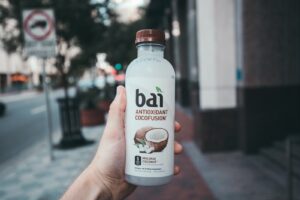Since the beginning of my journey writing this blog, I have learned a lot about my relationship with food. One question that has been tugging at me since I started seeing a dietitian and exploring intuitive eating – Can an intuitive eating approach be reconciled with calorie and macro counting? *
There are three general tools that dietitians and trainers use/advocate for nutrition strategy:
- CICO and calorie counting
- IIFYM and macro counting;
- The general concept of intuitive eating and set point weight;
In my next series of posts, we will take a deeper dive into intuitive eating (there is a whole book written on it), how professionals in the fitness field use formulas to determine a general baseline for calorie/macro intake, and how to implement the two in order to derive a good nutrition strategy with an apporach to meals that best fuels you and serves your body.
These are all written with the assumption that consulting with a professional, preferably a dietitian, is a key step toward designing a meal plan to meet your nutrition needs. I have just started seeing one again after COVID restrictions have lifted, and I write about that expeirence in my post here.
What is “intuitive eating?”
Dietitians often talk about a “set point” weight. This essentially means that if you are nourishing your body consistently with your daily activities, your weight will always hover at a certain “set point” range. If you are significantly below or significantly above that, something about your nutrition or health is off. As babies, we were intuitive eaters. We knew when we were hungry and when we were full. But like many environmental factors, the outside influencers on our bodies and brains threw that intuition off. In a lot of ways, nutrition strategy is just about relearning these instincts to get to the baseline that is right for you. .
The set point principle is closely connected to “intuitive eating.” Intuitive eating is an approach to self-regulation that was popularized by dietitians Evelyn Tribole and Elyse Resch in their 1995 book, Intuitive Eating: A Revolutionary Program That Works. You can learn more about their work on their website, intuitiveeating.org, including their “10 Principles of Intuitive Eating,” which include important healthful eating skills, like “Honor your hunger,” “Respect your fullness,” and “Honor your feelings without using food.” There are a number of tools in this approach, like the body scan and hunger scale, which we explore in this more detailed post on Intuitive Eating (it really is a thing)
So, the big question is, is intuitive eating inconsistent with a nutrition strategy that aims for a certain estimate of calories or nutrient composition. A heavily debated question, but the answer is, not necessarily.

CICO and Macros
Weight and calorie/macro needs can be another set of tools in the toolbox that inform a base case about where you are at and what can lead to achieving your goals. Knowing your approximate weight, caloric needs, and whether your food intake is consistent with these metrics is important
There is a fine line between obsessing about calories and a healthy sense of metrics as training wheels to achieve parity with your body clock. Planning meals and portion sizes, however, without having any quantitative baseline would be like spending money when you don’t have a clue of how much you make and how much you need to save. If making a comparison in the business world, a lack of knowing the numbers in your general energy equation would be like running a business with no knowledge of the P&L, balance sheet, or relative growth from quarter to quarter. Metrics measure progress towards a goal, and ensure the best decision-making in the process.
Think about it like this – say you are buying a house (like many people are). You’ve got to know your credit score, whether you have saved enough money for a down payment, and whether you can afford the mortgage before you go shopping around. Similarly, in order to effectively meal plan and make decisions when dining out or traveling, you need to have a sense of what your food intake needs are.
Just “winging it” and eating in a haphazard, unstructured manner can lead you down a confusing path. Research shows folks often under-estimate their food intake, sometimes by as much as 30 to 50 percent. Moreover, fitness trackers, though very popular, are not nearly as precise as we think they are. So what is the result? We can get lulled into a false sense of security by seeing thousands of calories burned on a tracker and not being conscious of what or more importantly how much we are eating.
You need to be able to measure it to manage it
The measurement of your fitness “wealth” is critical to your success.You only need a certain amount of calories to function and maintain a healthy weight each day. If you are totally out of sync with your body signals and completely unaware of what’s going on versus how much is being “earned”, you could be overdrafting your daily balance. Unlike with your bank, you won’t have a clue unless you make a conscious effort to estimate the balance and track the information. The effects of this haphazard approach often are gradual, which is why people go seek help baffled like it was something sudden.. And it’s not just aesthetics – too much of any given macronutrient – whether it is protein, carbs or fats, can tax your system in negative ways. For example, too much protein can wreak havoc on your kidneys. (as I discuss in my dietitian post, it is easy to fall into “broscience” and eat too much protein, especially if you are really into working out.). Similarly, too much fat, including even the good kind, can make you feel fatigued after eating, throw off your blood sugar, insulin resistance, and cause digestive issues.
By getting a sense of what calories you need, you can work with a professional to design a nutrition strategy that is suitable for your own particular health needs and flexible so that it mostly based on nutritious foods but also allows for “joy eats.” Yes, I believe in eating for joy. We are joy-seeking beings. We don’t eat just for fuel, we don’t mate just to reproduce, and we don’t travel just to get from point A to point B.
After you design this framework, some tracking system in the beginning will be helpful to gauge whether you are getting the right balance of calories and nutrients to meet your goals.
Overtime, though, as you develop a rhythm for eating intuitively according to your hunger scale and body clock, you can shed those training wheels.
An initial baseline guide, and what will come next
A great way to start a DIY method of estimating your needed caloric intake for your goals is the BMR and TDEE calculator, which you can find here at the NASM site. This has calculations to determine your Basal Metabolic Rate. If you want to know more, read this article where the author discusses how TDEE and BMR can be used to help manage your weight.
For now, all you really need to know about TDEE, BMR and how it generally relates to calories is this: Your TDEE Total Daily Energy Expenditure) is a product of your BMR (Basal Metabolic Rate) times your activity multiplier. In simple terms – your BMR is how many calories you need to binge watch the Real Housewives all day, whereas the TDEE is what you need to function at your basic level, whether that includes exercise, an active lifestyle, or a lot of walking, etc.
As a quick practical example, if you are a 145 pound 5’3″ woman who works out 3 times a week, your BMR would be about 1350 calories, and your TDEE would be about 2,030 calories.
Alternatives to calorie/macro metrics
Especially for patients that have sensitive relationships with food, another method commonly used for measurement of portion size is the “hand” method, which I want over in my post on portion control. Under this method, you generally measure food quantity by hand which correlates to a certain number of macro breakdown. This methodology developed by precision nutrition demonstrates this alternative process, which may be a good substitute if specific calorie and macro tracking, even in the short term, may trigger obsessive thoughts.
Tracking food intake information
I am a proponent of keeping a food diary. This isn’t just a way to calorie track, but it can also give you a sense of what times of day you need to eat so you can establish a consistent routine. If you consult with a dietitian, like I recommend, a food diary can inform that person of what your eating patterns are and what your nutrient deficiencies may be.
There are several tools you can use to track a period of your food intake. I prefer using google sheets, and I have included some of my sample worksheets here. Note that the time of day when food is consumed is as significant as the label. Getting a sense of the times you need to eat is more conducive to applying a rhythm of eating, as particularly how it relates to eating around your workouts (we discussed this in pre and post-workout nutrition).
Tracking can also be done in an app. The one I would most recommend is MyfitnessPal. This is by far the most user-friendly apps, and has been ranked one of the top apps in 2021. I would recommend using the phone app instead of the desktop version; it is more user-friendly and pulls up the foods faster. You can save meals that you regularly eat in the app as well, and it can find basically any convenience food, chain, grocery store, or nearby restaurant item. You can even scan the food that you are eating, and the app does a pretty good job of loading the data with basically no effort from you.
There is also the Ate app – this one is useful for apporaching intuitive eating because it ties your food to how you are feeling at the time that you eat and it is not so calorie focused. In fact, as one of the goals it asks you if a goal is to be happy and healthy – which is consistent with the goal of DAOFitlife – to lead happy, healthy lives. It is advertised as a food journaling app that made it easier to pick the foods that make us feel healthier: physically, mentally, and emotionally. While it’s not as metric focused, it is a good tool for simply tracking your food intake and times of day when you feel like you need to eat.
Here is a comparison of screenshots for the two apps
ATE Screenshot

MyFitnessPal Screenshot

My dietitian recommends that all meal tracking be done in real time, or a day in advance of meals, to minimize entry burden. If you are in an industry where you have to track billable time, you probably understand why! Trying to backtrack makes you overlook a lot of time – just like doing so with food tracking can make you overlook a lot of what you eat!
The process of figuring out calories and macro needs and a pattern of your eating takes time, but once you make that investment and eventually transition to a more intuitive form of eating, it becomes turnkey and automatic. Just like in your career, everything may seem overwhelming at first, then as you gain more experience, it becomes more second nature. You have an instinct for the right answer, instead of having to research for hours to get it. .
Can you reconcile these three tools?
Just like in the law, the answer is never black and white. What I have come down to is that yes, it is possible to reconcile the two – with shades of gray. I believe in SMART goals, and as part of those goals, I need to understand my baseline and where I want to end up. That is what we advise our clients on a daily basis – in order to achieve their objectives, we need to understand their base case. Then, we need to use metrics to determine whether they are meeting their objectives.
In business, accountability and metrics are important. How is a company supposed to know if it is meeting its goals and gains if there is no understanding of daily, weekly, quarterly sales? Similarly, fitness goals also need measurable metrics as a starting point. Like in business, too, you can get to a point where your body, like a well-established company, can “run itself”, so that you don’t need to micromanage every single meal and its associated numbers. While some people meticulously track these numbers, once you get an idea of how much you need to save and are able to automate some of that process through direct deposits or online bill pay, it becomes more intuitive what you can afford and what you need to make sure there is a budget for. The same can be done for your energy budget.
As I have learned from my recent sessions with a dietitian, there are ways to use metrics that can align your body’s energy needs with your brain’s natural “food intuition.” By taking some time to establish that baseline and implement some simple meal planning strategies, you can get into a rhythm of intuitive eating that will honor the quantity and quality of food that is right for your body. This way, you will not need to achieve your fitness goals with militant adherence to a restrictive eating plan that relies on “cheat meals” and guilt trips to punish yourself for falling off the beam.
Summary: using metrics as a starting point drive a successful nutrition strategy
Working with a dietitian to tailor your calorie and macro goals depending on your nutrition needs is where it makes sense to use this information. I would recommend tracking across a period of time, rather than just a day or a few days. This is because as professionals in the field have told me food choices and their impact on health are cumulative, not transactional.
With an understanding of these building blocks, you can have an informed conversation with a professional and design a plan of eating that makes your goals attainable and sustainable.
Once you understand how calorie and corresponding macro needs are determined as a foundation, we can layer on how these tools can be “training wheels” for starting to practice more intuitive eating. Finally, we will put both of these into practice with a formula for meal planning.
In the next three posts, we will discuss:
- How calories and macros can be used in meal planning
- The basics of meal planning;
- Intuitve eating as a tool to aid meal planning and mind-body connection to food.
Additional resources on intuitive eatng, calorie, and macro s
*NOTE: If you struggle with any kind of disordered eating, some of this content may be triggering. You can contact the national eating disorders association at https://www.nationaleatingdisorders.org/.
*Nothing in this article should be construed as medical advice or a set program on what amount of caloires anyone should be eating. As the article suggests, consulting with a specialized health professional is the best approach.






